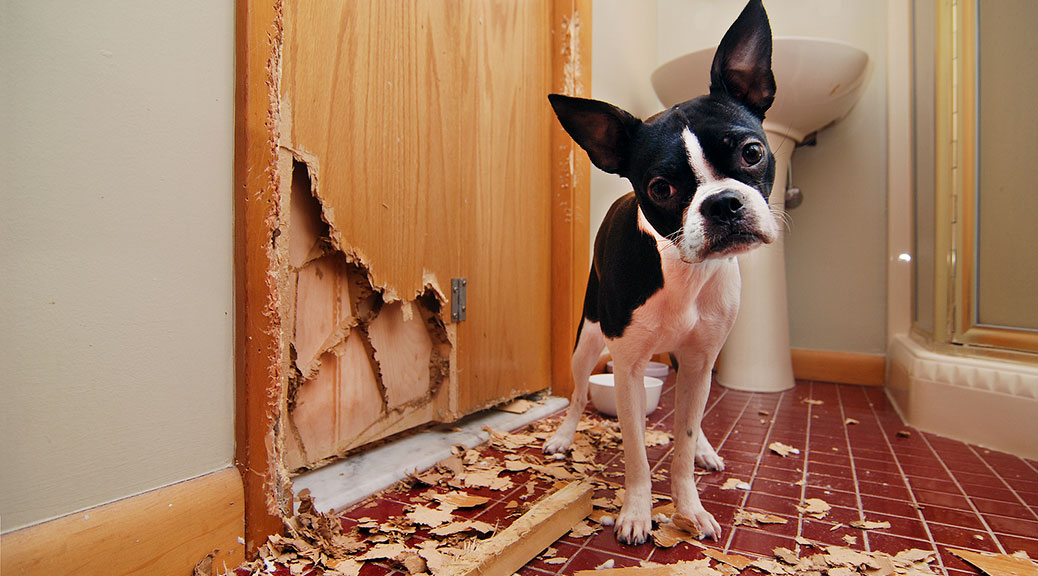Five Steps to Change Unwanted Dog Behavior
We all love our dogs and think they’re God’s gift to us, but they don’t always think like we do, and when they go off-track with their behavior it can take a little homework to figure out how to get through to them.
Whether it’s excessive barking, jumping on visitors, chewing up furniture, peeing in the house, digging in the yard or something else, our instinctive “No!” generally won’t work in the long term. It doesn’t communicate to the dog exactly what they’re being yelled at about or give them any alternative behaviors to consider. Worse, trying to intimidate your dog into compliance can throw a wrench into the positive, loving relationship you’re trying to build.
Here are five much better approaches to correcting negative dog behaviors:
- Management — This is usually only a first step toward ultimately resolving the problem, but it does bring results. It’s essentially removing the opportunity for the dog to act out. Crating the dog while you’re out means they can’t destroy the furniture, carpet or other household items while you’re gone, and blocking their view of the front yard means they likely won’t bark at the other dog being walked past or delivery person coming up to the door. This can take a lot of effort to pull off — leashing them when visitors come to the house to prevent jumping, waving distracting toys to stop them, especially puppies, from chewing on you or the furniture.
- Removing reinforcement — Whatever your dog is doing, they’re getting something out of it. Figuring out what that is means you can remove that reinforcement (like giving them more attention when they jump on you) or meet their need to handle emotions like aggression or anxiety in another way.
- Pick an alternative behavior — Visualize what you want your dog to do instead of what they are doing in a given situation, to give both of you a goal to work toward in their training. For example, you can say “instead of jumping on my mom when she comes into the house, I want Buddy to greet her calmly with all four feet firmly on the ground.” Or, “instead of begging for food at the table during breakfast, I want Ginger to eat her own food.” This becomes the goal of your training efforts.
- Use positive interrupters — These are short words or phrases you can teach your dog to pay attention to you instead of starting a destructive behavior or heading into a dangerous situation. Simply using your dog’s name isn’t the best choice. Instead, pick something else that you can say cheerfully and lovingly, no matter what the situation. This is where “no!” might work, but it can be hard to maintain the right tone. “Look,” “watch,” or noises like a tongue click or kissy noise are other options.Again, this takes effort to get this to work with your dog in all situations, but it can work. Train your dog to respond to this word by immediately giving them their very favorite treat as a reward. Continue to work on this, especially around distractions. These positive interrupters work momentarily, but suggesting an alternative behavior (such as chewing on a toy instead of a pillow) is what has the best chance to halt the destructive behavior in the long run.
- Use “force-free” correctors only when needed — These are corrections that steer clear of using any kind of force or intimidation with the dog but still send a message. Timeouts are a good example, but it needs to be clear to the dog which behavior is triggering them. Other examples are walking away, putting toys and treats away or stopping your dog from something they want to do. These are most effective at stopping behaviors that tend to be reinforced by your attention.
In most situations steps 1-3 will be enough to halt the unwanted behavior, while 4 and 5 may be needed to correct more willful dogs or ones that are very reward-oriented. But forceful corrections like swatting the dog are the wrong way to build a positive, loving relationship with your pet.

